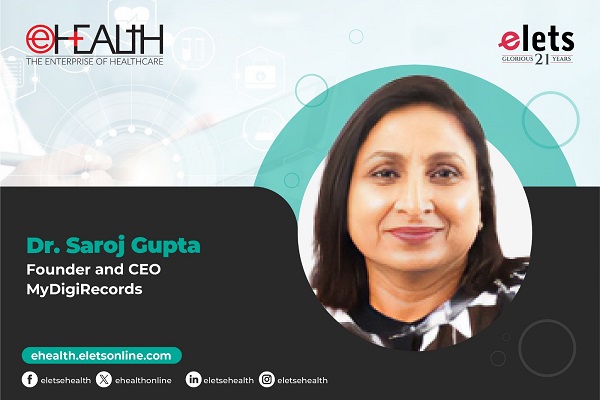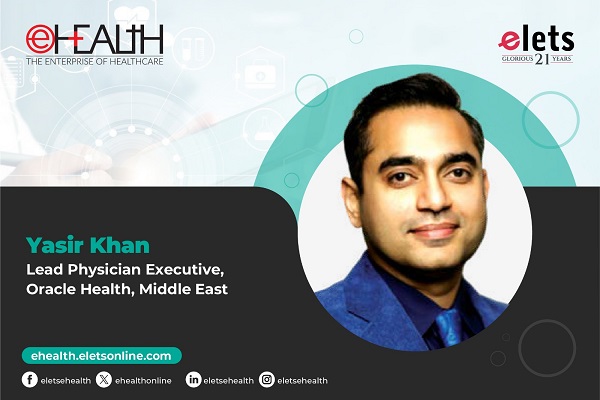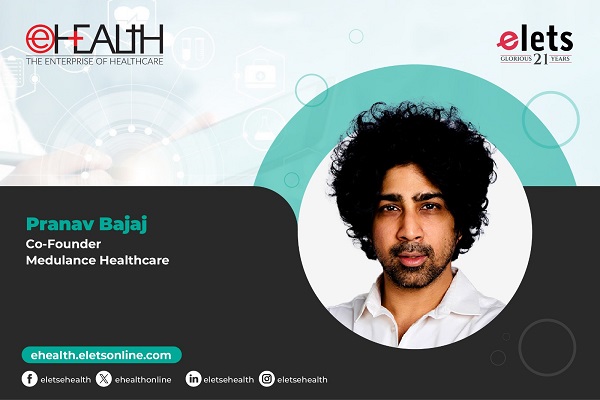 Dr Girdhar J Gyani, Director General, Association of Healthcare Providers (India) (AHPI), discusses about the plans to be implemented and role of government in promoting healthcare in India. In Conversation with Ekta Srivastava, Elets News Network (ENN).
Dr Girdhar J Gyani, Director General, Association of Healthcare Providers (India) (AHPI), discusses about the plans to be implemented and role of government in promoting healthcare in India. In Conversation with Ekta Srivastava, Elets News Network (ENN).
Tell us the motive behind the launch of the Association of Healthcare Providers of India (AHPI).
The Association of Healthcare Providers (India) is a recent initiative. It was founded in November 2012. Basically, the idea behind AHPI is that the hospitals did not have a pan-India organisation, which can work together and with the government. We wanted to work with the government on the universal health coverage and to build capacity into the Indian health systems. So, with this motive, this association has been formed and today we have more than 10,000 hospitals as its members.

Recently, IHI (Institute for Healthcare Improvement) entered into an agreement with AHPI. What benefits do you foresee?
The Institute for Healthcare Improvement, USA is a premium institute in healthcare quality. They keep conferences all over the world but they have an open school programme which is delivered online. Anybody can register there, but the fee is exorbitant− ranging from $70 to $90 which a person has to pay to undergo that programme. This programme has got 16 modules and covers legal, patients safety, facility management and all sorts of things. So, we entered into an agreement with a lot of deliberations to offer this programme to Indians here by just paying `3,000 and the person can complete these 16 modules in one years time. Ideally speaking, it can just be covered in two to three months time, but we thought we would be able to provide world-class modules to our Indian professionals.
This is what we have started now and we are going to start the first batch with 50 students, for which we have got 50 passwords from IHI already that will be given to the individuals who will register with us.
Advocacy is the major issue. To ensure that we are allowed to function to deliver universal health coverage, regulations should be objective, taxation should be reasonable and other conditions like lands, should be in such a way that they are able to meet objective of both our and government
What is the total worth of healthcare market in India at present and how fast is it growing?
The worth keeps changing. If you talk to Mc Kinsey, they will give you one figure and if you talk to KPMG, they will give you another. In fact, healthcare business would be the largest segment in terms of generating employment. This sector was never aware of its own potential. First, we are the largest employment generation body, secondly, in terms of social aspect, we employ maximum number of females. We have a higher ratio than paramedics and doctor communities combined. The spending on healthcare by the private sector is 80%. The rural areas still have big untapped market, while some corporate are going inside.

What are the major factors that the government needs to know to improve the sector significantly?
The government is not investing in secondary and tertiary level of healthcare. Have you seen any new district hospitals in the past 30 years? Same is the case with tertiary level of healthcare except some seven to eight AIIMs which have been announced but the figure is very small. The whole secondary and tertiary level is with the private sector.
In 1947, private sector had 8 per cent of the market, however, today they have captured 70 per cent in terms of patients workload and in terms of IPD it is 60 per cent. The private has a large share of investment in healthcare… The government and the private sector should be treated together. Both are healthcare providers, but in terms of taxation the hospital owners pay electricity tariffs what the government charges from malls and cinema halls. Of four categories,agriculture, domestic, industries and commercial, we are bracketed under commercial.
On the one hand, the government wants us to do noble cause by providing treatment to the patients and on the other hand there is taxation. We have taken up the matter with various state governments, and luckily Karnataka is the first state to drop down the tariff by 15 per cent. Haryana and Madhya Pradesh have also initiated the process. Secondly, we do not have the technology for biomedical treatment, we have to import since there is no manufacturing done here. There is a 12 per cent duty on this.
Government needs to provide social security cover related to healthcare. Schemes like Aarogyasri of Andhra Pradesh should be made available across the entire country. This is working because government is buying healthcare services from the private players and serving to poor patients under PPP model.
Drastic measures are needed to bring in simple and objective regulatory framework for the industry. Similarly, in the breakup of taxation on buildings, we have calculated that 40 per cent goes to government taxation. In terms of land, 12 acres of land in Dwarka was announced for auction Two years back, the cost of which was `300 crores.
It will take five years time if you build a hospital at that cost, which is very discouraging factor for the private sector. Secondly, patients safety is important to everyone. If I have to do a procedure in a 10-bed hospital being run in a residential area, where operation theatres size is just 7 by 4 feet and if the same procedure is done in say Vedanta, obviously it will cost more. I think every citizen has to realize this and has to start budgeting for healthcare. We need to spread awareness these safety and quality healthcare are going to cost more and cant be free.
What are your views on the rise of multi-speciality hospitals?
Why you need multi-speciality hospitals. Suppose you are doing a bypass surgery there you develop a neurological problem, which was not earlier known. If a multi speciality hospital is there then under one roof you can betaken care of, while a single speciality hospital has of course its own advantages but people are preferring multi specialities.
The issue perhaps worth raising is whether you need secondary level or tertiary level. Here again AIIMS is the highest level of tertiary level hospital in the country but it is mostly used as a primary ailments. And there a patient has to roam everywhere to get a single test done; even sometime they are referred to other hospital like Safdarjung hospital or RML. Go to AIIMS any time there is a huge line coming from villages without knowing whether they need a tertiary hospital or not. We have not been able to create a referral system correctly. A good example of this will be Sanjay Gandhi Hospital in Lucknow, they will not admit a secondary level patient there, we can do it here too provided we have to plan to do it.
Why corporate are not reaching in the rural areas and how can they increase their reach?
There were two super speciality hospitals opened in Delhi by the government last year and wanted to do PPP. They put a condition that 60 per cent of the patients have to be treated at CGHS rates. Secondly, doctors avoid rural postings because of the lack of infrastructure, safety, schools, etc. Some of the medical colleges that have been opened by the private sector are far in rural areas and even the government encourages them to open medical colleges there. Medical colleges should be in a proper district when they are tertiary level health centres. Nobody is against the setting up of an infrastructure in rural areas. Agro industries, some coal-based fire plants should be set up so that the rural population get employment there. The government has to find a practical solution. People from rural areas come to metro cities to give their children better lifestyles and we are asking doctors to go and serve in rural areas.
Patient Safety has become one of the most important factors in the healthcare and concerns equally to all the stakeholders. Patient safety requires open communication between physicians, hospital staff, patients and their families”
Pirated medicines are very much common. What do you think why there are not enough laws to put them in place?
Regulations are always an issue in this country. Drug controller is supposed to regulate the issues. They may not have enough man power. They may not have enough technologies to do the surveillance, or they are not willing to do so. . In order to control this, there has to be right kind of people, right kind of technology and transparent system.
How the organisation is working on to benefit common man?
The motto of AHPI is Advocating and Educating for Well Being of Common Man. We have close to 10,000 hospitals as our members. We have taken series of advocacy issues with the government, which should help in providing safe and affordable healthcare. For example we have taken up the matter to reduce electricity tariff for hospitals, which is presently at par with Cinema Halls. We have submitted detailed proposal to the government to reduce the import duty on life saving medical equipment.
We are working with our member hospitals, especially with smaller nursing homes to implement patient safety protocols. We have prepared two level standard on Patient Safety to provide guidance to these nursing homes. We are also going to launch series of value added training programs to improve on safety and affordability.
What is you road map ahead?
We have to be realistic about the cost of healthcare, which means the cost of safe healthcare. Secondly, the government must bring effective and objective regulation, whereby no hospitals are allowed to function unless they adhere to minimum critical protocols for patients safety. According to me, these are the two important things. Rest, the existing primary health centres should be handed over to the private sector. Our association can play a role there− you give us the primary centre, you give us the budget and we will invest too as a part of our corporate social responsibility. The government is buying the entire healthcare from us for all the schemes. We have the hospitals, they have the patients for whom they only pay, and this is one example of PPP. Another PPP can be, they give us the land and we can run a hospital on that. They can also charge 4 percent from us from the gross revenue
Be a part of Elets Collaborative Initiatives. Join Us for Upcoming Events and explore business opportunities. Like us on Facebook , connect with us on LinkedIn and follow us on Twitter , Instagram.












